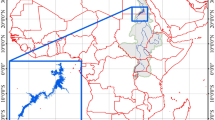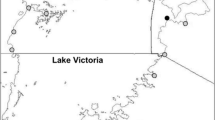Abstract
Conventional methods are inefficient and costly when it comes to collecting information on changes in water level and land surface temperatures (LST). Whereas, satellite data can be used to comprehensively investigate these parameters. By duplicating telemetry data at different times, it is possible to identify and study variable and dynamic phenomena in the environment. Overall, any change in the land surface has severe effects on the weather in these areas. Drying inland lakes is one of the emerging meteorological problems, such as the drying of Bakhtegan and Tashk lakes. The purpose of this research is the changes in Tashk and Bakhtegan lakes. In this study, Landsat 5–8 satellite data and the NDWI index were used to calculate the area of Tashk and Bakhtegan lakes from 1986 to 2018. During the study period, the area of the aforementioned lakes decreased significantly, so Lake Bakhtegan has dried up completely since 2009. As a result of coding LST in the Google Earth Engine system, the average land surface temperature has increased from 22.1 °C in 1986 to 30.34 °C in 2018, an increase of more than 8 °C. Furthermore, using the Grace satellite data and studying the change in groundwater level, it has been found that the highest rate of groundwater drop occurred in 2017 by 20 cm, and there is a general decreasing trend of more than 8 cm/year.



















Similar content being viewed by others
Data availability
Not applicable.
References
Alesheikh AA, Ghorbanali A, Talebzadeh A (2004). Generation the coastline change map for Urmia Lake by TM and ETM+ imagery. In: Map Asia Conference. Bei**g, China
Ayenew T (2004) Environmental implications of changes in the levels of lakes in the Ethiopian rift since 1970. Reg Environ Change 4(4):192–204. https://doi.org/10.1007/s10113-004-0083-x
Azabdaftari A, Sunar F (2016) Soil salinity map** using multitemporal landsat data. ISPRS International archives of the photogrammetry. Remote Sens Spat Inf Sci. https://doi.org/10.5194/isprs-archives-XLI-B7-3-2016
Bai T, Liu X, Ha Y-P, Chang J-X, Wu L-Z, Wei J, Liu J (2020) Study on the single-multi-objective optimal dispatch in the middle and lower reaches of Yellow River for River Ecological Health. Water 12(3):915. https://doi.org/10.3390/w12030915
Bayram B, Bayraktar H, Helvaci C, Acar U (2004) Coastline change detection using corona, SPOT and IRS ID Images. XXth congress international society for photogrammetry and remote sensing, commission VII, WG VII/3. Istanbul, Turkey, pp 437–441
Benali A, Carvalho AC, Nunes JP, Carvalhais N, Santos A (2012) Estimating air surface temperature in Portugal using MODIS LST data. Remote Sens Environ 124:108–121. https://doi.org/10.1016/j.rse.2012.04.024
Coskun M, Musaoglu N (2002) Investigation of rainfall-run off modeling of the van lake catchments by using remote sensing and GIS integration. ITU, Civil Engineering Faculty, Istanbul, Turkey. http://www.isprs.org/proceedings/xxxv/congress/comm7/papers/52.pdf
Dasarathy V (1991) Nearest neighbor classification techniques. IEEE Computer Society, Washington
Drengne H (1994) Land degradation in the word arid zones. SSSA special publication (USA)
Duan Z, Bastiaanssen WGM (2013) Estimating water volume variations in lakes and reservoirs from four operational satellite altimetry databases and satellite imagery data. Remote Sens Environ 134:403–416. https://doi.org/10.1016/j.rse.2013.03.010
Duethmann D, Blöschl G, Parajka J (2020) Why does a conceptual hydrological model fail to correctly predict discharge changes in response to climate change? Hydrol Earth Syst Sci 24:3493–3511. https://doi.org/10.5194/hess-24-3493-2020,2020
Elnaggar AA, Noller JS (2009) Application of remote-sensing data and decision-tree analysis to map** salt-affected soils over large areas. Remote Sens 2(1):151–165. https://doi.org/10.3390/rs2010151
Ertürk A, Ekdal A, Gürel M, Karakaya N, Guzel C, Gönenc E (2014) Evaluating the impact of climate change on groundwater resources in a small Mediterranean watershed. Sci Total Environ 499:437–447. https://doi.org/10.1016/j.scitotenv.2014.07.001
Gong P, Pu R (2012) Retrieval of land surface temperature from remote sensing thermal images. University of California, Berkeley
Guariglia A, Buonamassa A, Losurdo A, Saladino R, Trivigno ML, Zaccagnino A, Colangelo A (2006) A multisource approach for coastline map** and identification shoreline changes. Ann Geophys 49(1):295–304
Ibrahim M, Koch B, Datta P (2021) Evaluate the effect of land surface temperature in arid and semi-arid lands using potential remote sensing data and GIS techniques. Int J Glob Warm 24(3–4):342–355. https://doi.org/10.1504/IJGW.2021.116713
Illesand TM, Kiefer PW (1994) Remote sensing and image interpretation. Wiley, USA
Iwaki M, Yamashiki Y, Toda T, Jiao C, Kumagai M (2021) Estimation of the average retention time of precipitation at the surface of a catchment area for Lake Biwa. Water 13(12):1711. https://doi.org/10.3390/w13121711
Jensen JR (1996) Introductory digital image processing: a remote sensing perspective, 2nd edn. Prentice-Hall, Upper Saddle River, p 316
** S, Hassan AA, Feng GP (2012) Assessment of terrestrial water contributions to polar motion from GRACE and hydrological models. J Geodyn 62:40–48.https://doi.org/10.1016/j.jog.2012.01.009
Kaichang D, Rui** M, Jue W, Ron L (2009) Coastal map** and change detection using high-resolution IKONOS Satellite imagery, Japan-Ohio
Kelmas V (2011) Remote sensing of wetlands: case studies comparing practical techniques. J Coast Res 27(3):418–427. https://doi.org/10.2307/29783262
Kish SA (2002) A remote sensing and GIS study of long-term water mass balance Lake Jacson. GSA Annual Meeting, Hynes Convention Center, November 5–8. College of Engineering Science Technology and Agriculture, Florida
Kurt S, Karaburun A, Demirci A (2010) Coastline changes in Istanbul between 1987 and 2007. Sci Res Essays 5(19):3009–3017
Lemieux J, Hassaoui J, Molson J, Therrien R, Therrien P, Chouteau M, Ouellet M (2015) Simulating the impact of climate change on the groundwater resources of the Magdalen Islands, Québec Canada. J Hydrol Reg Stud 3:400–423. https://doi.org/10.1016/j.ejrh.2015.02.011
Li F, Wang Z, Chao N, Song Q (2018) Assessing the influence of the three gorges dam on hydrological drought using GRACE data. Water 10(5):669–686. https://doi.org/10.3390/w10050669
Li X, Hu Q, Wang R, Zhang D, Zhang Q (2021) Influences of the timing of extreme precipitation on floods in Poyang Lake, China. Hydrol Res 52(1):26–42. https://doi.org/10.2166/nh.2021.078
MacDonald LH, Smart AW, Wissmar RC (1991) Monitoring guidelines to evaluate effects of forestry activities on streams in the Pacific Northwest and Alaska. Unites States Environmental Protection Agency, Report No. EPA 910/9-91-001
Maier N, Dietrich J (2016) Using SWAT for strategic planning of basin scale irrigation control policies: a case study from a humid region in northern Germany. Water Resour Manag 30(9):3285–3298. https://doi.org/10.1007/s11269-016-1348-0
Mainguet M (1994) What is desertification? Definitions and evolution of the concept. Desertification. Springer, Berlin, pp 1–16
Mazhar N, Javid K, Akram M, Afzal A, Hamayon K, Ahmad A (2022) Index-based spatiotemporal assessment of water quality in Tarbela Reservoir, Pakistan (1990–2020). Geogr Environ Sustain 15(4):232–242. https://doi.org/10.24057/2071-9388-2022-077
McFeeters SK (1996) The use of the Normalized Difference Water Index (NDWI) in the delineation of open water features. Int J Remote Sens 17(7):1425–1432. https://doi.org/10.1080/01431169608948714
Najafi A (2003) Investigation of the snowmelt runoff Orumiyeh-region using modeling GIS and RA techniques. International-Institute for Geo-information Science and Observation Enchede, the Netherland.
Narula KK, Gosain AK (2013) Modeling hydrology, groundwater recharge and non-point nitrate loadings in the Himalayan Upper Yamuna basin. Sci Total Environ 468:S102–S116
Nasiri A, Zandi R, Khosravian M (2022) Evaluating Urban heat islands using the Urban Viability Index (Case Study: Karaj Metropolis). J Indian Soc Remote Sens 50:833–847. https://doi.org/10.1007/s12524-021-01489-1
Pakparvar M, Cornelis W, Pereira LS, Gabriels D, HosseiniMarandi H, Edraki M, Kowsar SA (2014) Remote sensing estimation of actual evapotranspiration and crop coefficients for a multiple land use arid landscape of southern Iran with limited available data. J Hydroinf 16(6):1441–1460. https://doi.org/10.2166/hydro.2014.140
Roberts DA, Keller M, Soares JV (2003) Studies of land-cover, land-use, and biophysical properties of vegetation in the large-scale biosphere-atmosphere experiment in Amazonia. Remote Sens Environ 87(4):377–388. https://doi.org/10.1016/j.rse.2003.08.012
Rodell M, Famiglietti JS, Devereaux JA (1999) Ground-based investigation of soil moisture variability within remote sensing footprints during the Southern Great Plains 1997 (SGP97) Hydrology Experiment. Water Resour Res 35:1839–1851. https://doi.org/10.1029/1999WR900047
Rodrigues DBB, Gupta HV, Mendiondo EM (2014) A blue/green water-based accounting framework for assessment of water security. Water Resour Res 50(9):7187–7205. https://doi.org/10.1002/2013WR014274
Rokni K, Ahmad A, Selamat A, Hazini S (2014) Water feature extraction and change detection using multitemporal Landsat imagery. Remote Sens 6(5):4173–4189. https://doi.org/10.3390/rs6054173
Roni P, Liermann M, Muhar S, Schmtz S (2012) Monitoring and evaluation of restoration actions. In: Roni P, Beechie T (eds) Stream and watershed restoration: a guide to restoring riverine processes and habitats. Wiley, Chichester, pp 254–279
Shrestha S, Viet BT, Prasad PV (2016) Climate change impacts on groundwater resources in Mekong Delta under representative concentration pathways (RCPs) scenarios. Environ Sci Policy 61:1–13. https://doi.org/10.1016/j.envsci.2016.03.010
Śliwińska J, Wińska M, Nastula J (2019) Terrestrial water storage variations and their effect on polar motion. Acta Geophys 67:17–39. https://doi.org/10.1007/s11600-018-0227-x
Sima S, Tajrishy M (2013) Using satellite data to extract volume–area–elevation relationships for Urmia Lake. Iran. J Great Lakes Res 39:90–99. https://doi.org/10.1016/j.jglr.2012.12.013
Sima S, Ahmadalipour A, Tajrishy M (2013) Map** surface temperature in a hyper-saline lake and investigating the effect of temperature distribution on the lake evaporation. Remote Sens Environ 136:374–385. https://doi.org/10.1016/j.rse.2013.05.014
Singh A, Seitz F, Schwatke C (2012) Interannual water storage changes in the Aral Sea from multi-mission satellite altimetry, optical remote sensing, and GRACE satellite gravimetry. Remote Sens Environ 123:187–195. https://doi.org/10.1016/j.rse.2012.01.001
Springer A, Eicker A, Bettge A, Kusche J, Hense A (2017) Evaluation of the water cycle in the European COSMO-REA6 reanalysis using GRACE. Water 9(4):289–313. https://doi.org/10.3390/w9040289
Tajdarul H, Syed James S, Famiglietti M, Rodell J, Chen C, Wilson R (2008) Analysis of terrestrial water storage changes from GRACE and GLDAS. Water Resour Res 44:1–15. https://doi.org/10.1029/2006WR005779
Tapley BD, Bettadpur S, Watkins M, Reigber C (2004) The gravity recovery and climate experiment: mission overview and early results. Geophys Res Lett. https://doi.org/10.1029/2004GL019920
Trumpickas J, Brian S, Minns J, Charles K (2009) Forecasting impacts of climate change on Great Lakes surface water temperatures. J Great Lakes Res 35:454–463. https://doi.org/10.1016/j.jglr.2009.04.005
Upp DLB (1988) Background and extensions to depth of penetration (DOP) Map** in Shallow Coastal Waters. Proceeding of the Symposium on remote sensing of Coastal zone, Gold Coast, Queensland, September, IV.2.1-IV.2.19
Wahr J, Molenaar M, Bran F (1998) Time variability of the Earth’s gravity field: hydrological and oceanic effect and their possible detection using GRACE. J Geophys Res 103:30229–32205. https://doi.org/10.1029/98JB02844
Wang YQ, Mitchell BR, Nugranad-Marzilli J, Bonynge G (2009) Remote sensing of land-cover change and landscape context of the national parks: a case study of the Northeast temperate network. Remote Sens Environ 113:1453–1461. https://doi.org/10.1016/j.rse.2008.09.017
Yudha S (2023) Detection of changes in water surface area in Limboto Lake using Landsat data From 1990 to 2020. Earth Environ Sci 1127:012021. https://doi.org/10.1007/s10333-015-0481-3
Author information
Authors and Affiliations
Contributions
This research did not receive any specific grant from funding agencies in the public, commercial, or not-for-profit sectors. Contribution: All authors (AN, MK, RZ, AE, MB) discussed the results and contributed to the final manuscript. AN: working on program, writing and analyzing results MK: program running, work organizing and editing RZ: editing and reviewing AE: editing and reviewing MB: editing and reviewing
Corresponding author
Ethics declarations
Conflict of interest
The authors declare no competing interests.
Additional information
Publisher's Note
Springer Nature remains neutral with regard to jurisdictional claims in published maps and institutional affiliations.
Rights and permissions
Springer Nature or its licensor (e.g. a society or other partner) holds exclusive rights to this article under a publishing agreement with the author(s) or other rightsholder(s); author self-archiving of the accepted manuscript version of this article is solely governed by the terms of such publishing agreement and applicable law.
About this article
Cite this article
Nasiri, A., Khosravian, M., Zandi, R. et al. Monitoring the physical changes of lakes Bakhtegan and Tashk through land surface temperature and groundwater-level changes using remote-sensing technology. Environ Earth Sci 82, 454 (2023). https://doi.org/10.1007/s12665-023-11117-5
Received:
Accepted:
Published:
DOI: https://doi.org/10.1007/s12665-023-11117-5




